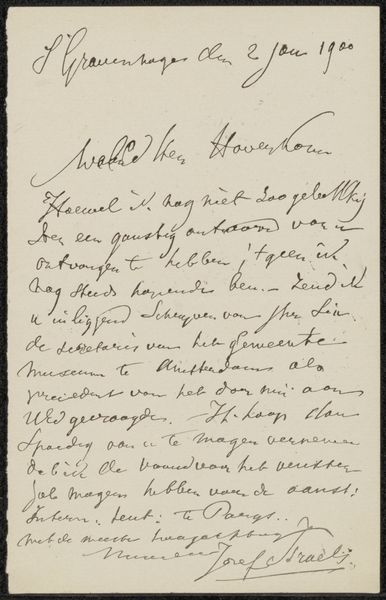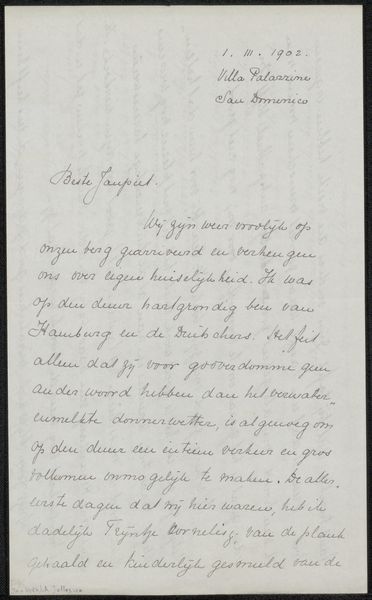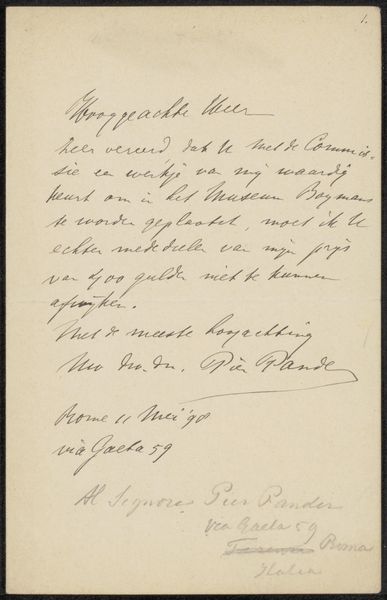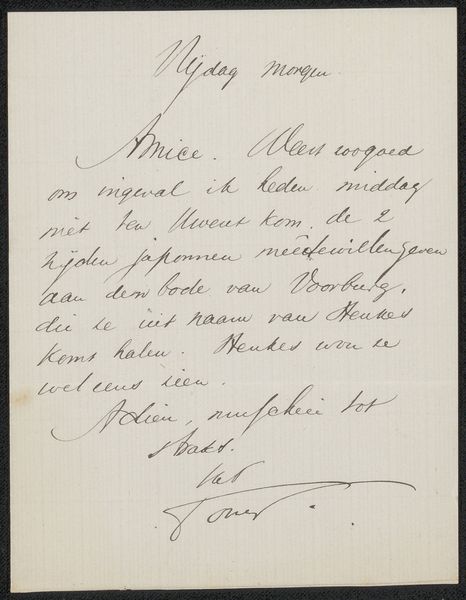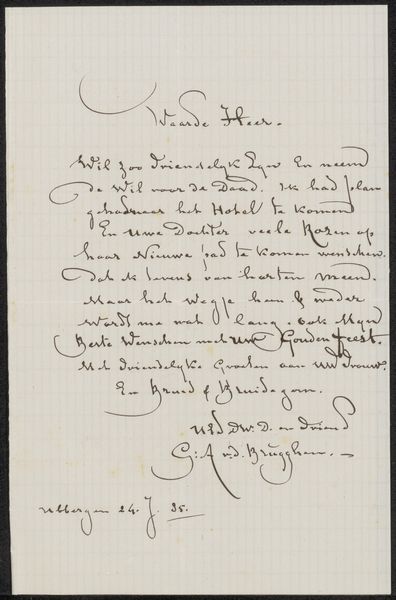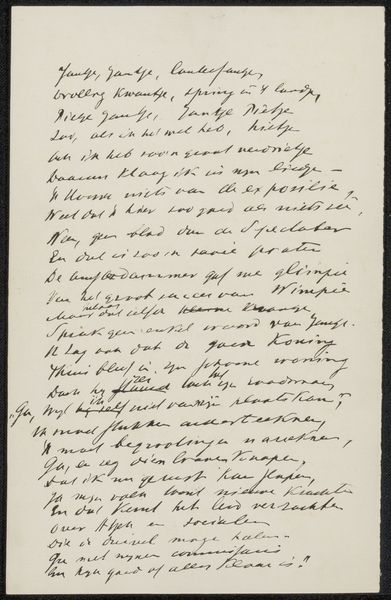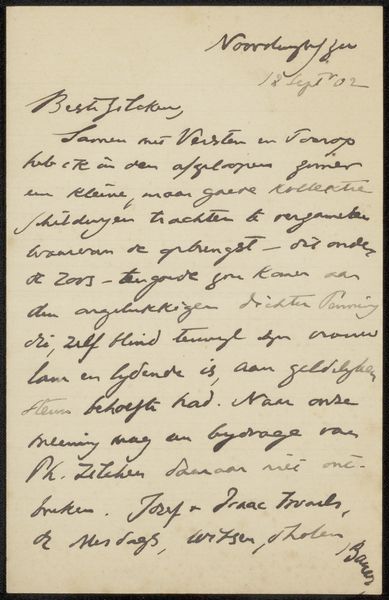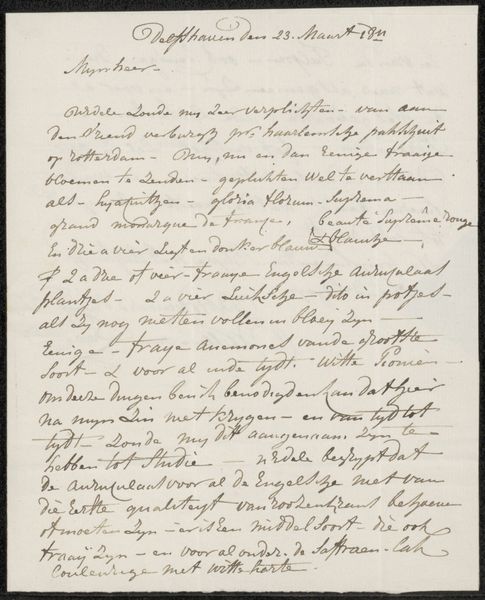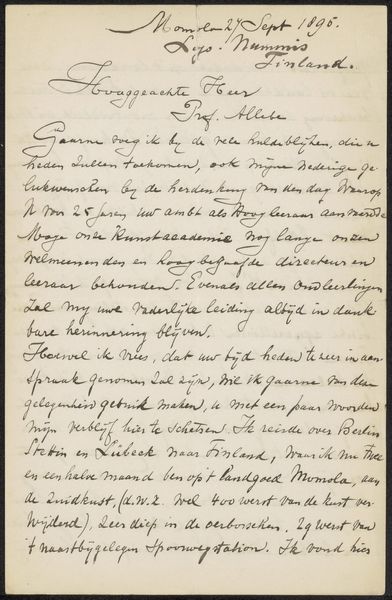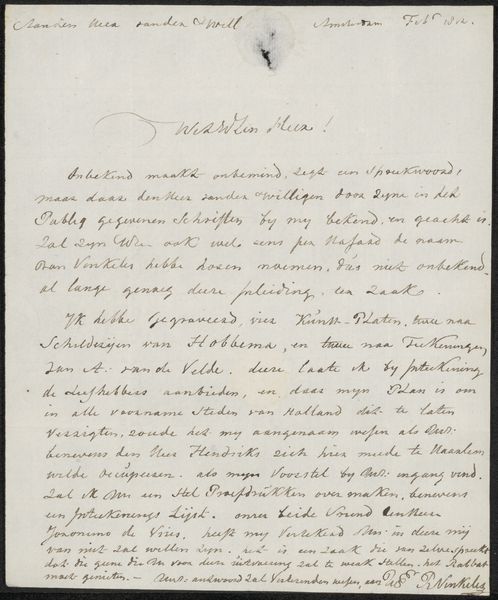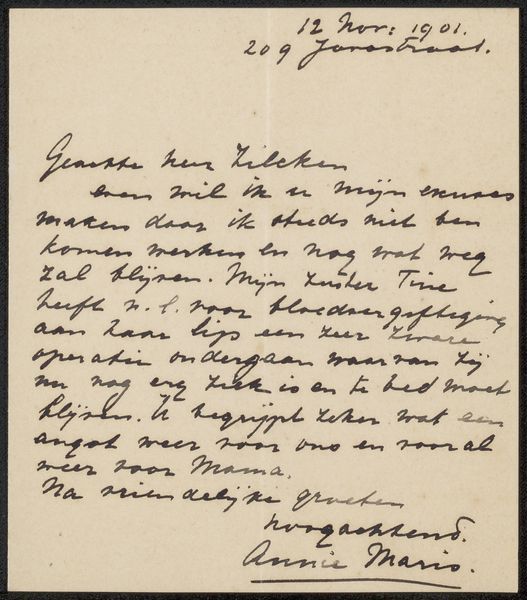
drawing, paper, ink, pen
#
portrait
#
drawing
#
hand-lettering
#
hand drawn type
#
hand lettering
#
paper
#
personal sketchbook
#
ink
#
hand-drawn typeface
#
ink drawing experimentation
#
romanticism
#
pen-ink sketch
#
pen work
#
sketchbook drawing
#
pen
#
sketchbook art
Copyright: Rijks Museum: Open Domain
Curator: Let's discuss "Brief aan anoniem," attributed to Reinier Vinkeles and thought to have been made sometime between 1814 and 1819. It's currently held at the Rijksmuseum. What strikes you about it? Editor: The sheer intimacy of it! It's a handwritten letter, personal. You can almost feel the writer's hand moving across the page, the pen scratching against the paper. I’m curious about the ink—what kind was it, and what paper was used? These materials held specific cultural and economic value at the time. Curator: Indeed. Examining it through a historical lens, it's a fascinating artifact reflecting the epistolary culture of the 19th century. Letters were crucial for communication, diplomacy, and personal relationships, weren’t they? And look at the skill in the penmanship; the labor invested in the writing itself elevates it. Editor: Absolutely. It blurs the line between functional document and art object. We're seeing the development of hand-drawn typefaces and exploring the material boundaries between writing and visual art. I wonder, did Vinkeles consider himself a calligrapher as well as an artist? Curator: Perhaps. Vinkeles was, after all, a prominent engraver. His mastery of line, evident here, undoubtedly influenced the aesthetic. The letter likely carries socio-political undertones, acting as a channel for cultural expression during a turbulent era. Editor: Agreed. It's also compelling to think about the recipient and the role this letter played in their life. It served a specific function within a network of social exchange, didn't it? This wasn't just art for art's sake; it was communication embedded within a particular social and economic context. Curator: Precisely. The letter form offered agency. This piece gives a glimpse into interpersonal networks. Considering that anonymous nature—how does that add to the intrigue, or maybe to the social context of its use? Editor: Well, the ambiguity heightens the mystique. Focusing on the ink and paper further helps contextualize production of these works, reminding us of labor involved in the production of the object and its message. Curator: Looking at the "Brief aan anoniem" prompts us to remember the complex intersections of communication, politics, and personal connection embedded in art. Editor: And seeing the art through this letter, that's such an everyday yet complex, valued item, provides another lens in seeing its own materiality and how art meets material.
Comments
No comments
Be the first to comment and join the conversation on the ultimate creative platform.
